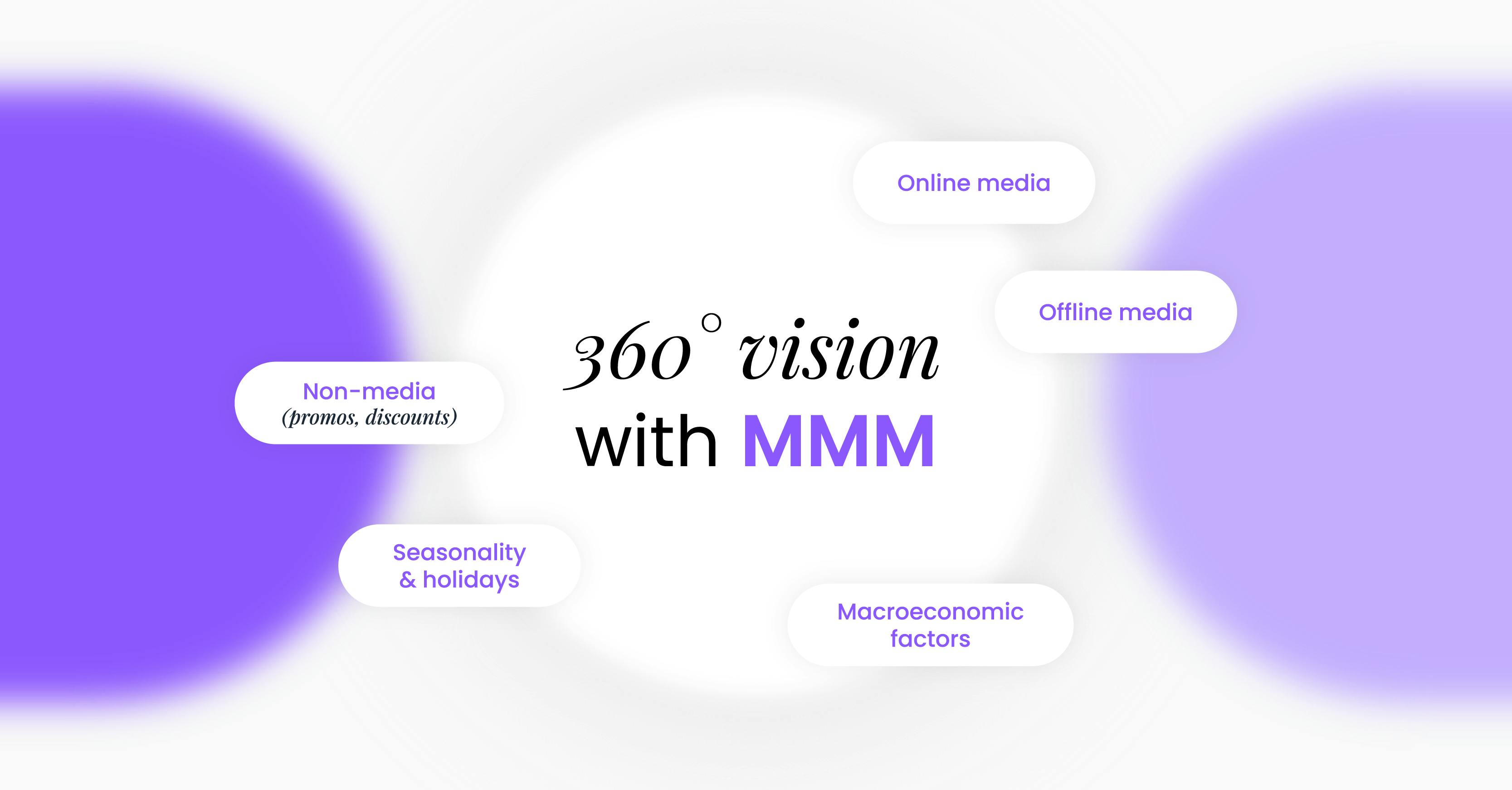Main Pain Points
- Privacy and Individual Data: New regulations prevent individual user tracking, reducing the effectiveness of models that rely on cookies. In a more private world and less efficient cookies, attribution based on individual data loses statistical effectiveness in favor of anonymized aggregated data.
- Last-Click Attribution: Last-click attribution overvalues the last channel prior to a sale and underestimates the contributions of previous interactions (awareness, consideration, remarketing).
- Lack of incremental and holistic vision: Fragmented measurement fails to understand the true impact of each channel on the entire funnel or how external factors (promotions, economics, seasonality) affect results.
Marketing Mix Modeling: Beyond Attribution
Marketing Mix Modeling (MMM) is an analytical approach that uses statistical and econometric models to quantify the impact of multiple variables—such as paid and organic media, promotions, pricing, and seasonality—on business outcomes (sales, revenue, and leads).

Why is it important today?
In an environment where data is more limited but decisions must be more precise, MMM becomes an essential tool:
- It works without personal data: It operates on aggregated data, without the need for cookies or individual identifiers.
- It optimizes budgets: It allows reallocation of investment to channels with the highest marginal ROI.
- It offers a full-funnel view: It considers the entire marketing ecosystem, beyond the digital channel.
In this way, MMM doesn't replace attribution models: it complements them. While attribution models (such as MTA) trace the path of an individual user, MMM measures the aggregate effect. Both models enhance each other when combined with experimentation (A/B testing or GeoLift).
Why is it the most in-demand tool for marketers?
MMM doesn't replace attribution models: it complements them. While attribution models (such as MTA) trace the path of an individual user, MMM measures the aggregate effect. Both models enhance each other when combined with experimentation (A/B testing or GeoLift).
- Works without personal data: It operates on aggregated data, without the need for cookies or individual identifiers.
- Optimizes budget: Allows reallocation of investment to channels with the highest marginal ROI.
- Offers a full-funnel view: Considers the entire marketing ecosystem, beyond the digital channel.
A 360° view: what MMM really measures
Unlike traditional attribution models, the MMM offers a comprehensive understanding of all the factors that influence results.
- Online media: Paid traffic, organic traffic, social media, influencers, email, podcasts.
- Offline media: TV, radio, outdoor advertising, print, events.
- Commercial factors: Prices, promotions, discounts, distribution channels.
- Seasonality: Summer/winter, holidays, key events.
- Macroeconomic variables: Inflation, unemployment, exchange rate, weather, regulations.
This approach helps answer a key question: How much of our sales can be explained by our marketing efforts and how much by external factors?
Business impact in real cases
We're not just talking about theory. Several brands in Latin America are already using MMM to transform their strategy:
- Telecommunications: For Liberty Latin America, we developed a marketing mix model that increased its optimization potential by 15%. See the case study.
- Financial Services: For five (5) different brands, our results revealed that the effective implementation of MMM can increase conversions by between 3% and 15% with the same advertising budget. See the case studies.
These results demonstrate the potential of MMM to generate real and tangible efficiency.
How do we implement MMM at Bunker DB?
With global recognition from Meta Business Partner and TikTok Marketing Partner in measurement for our marketing mix capabilities, our methodology combines technical precision and real-world applicability. Here's how we work:
- Collection and normalization of internal and external data. We unify all the necessary information—from media investment to macroeconomic variables—ensuring statistical consistency.
- Econometric modeling and impact estimation. We apply iterative models to estimate how much each variable contributes to sales, including marginal ROI by channel.
- Saturation curves by medium. We identify points where investment is no longer efficient and suggest optimal reallocations.
- Calibration with incrementality studies. We compare the model with real-world tests to improve its accuracy.
- Budget optimization. We evaluate the difference between the original and optimized budget, clearly showing the potential gains in ROAS.
Conclusion: Smarter, Data-Driven Marketing
Marketing Mix Modeling is a modern response to a more complex context. It allows brands to measure accurately, decide with evidence, and optimize with confidence. Better measurement will come from using the right models, not individual data.






